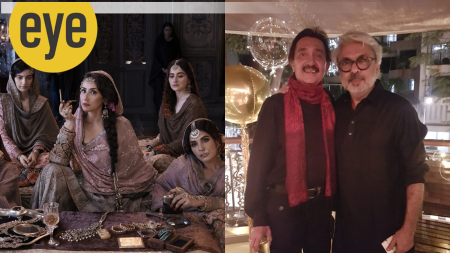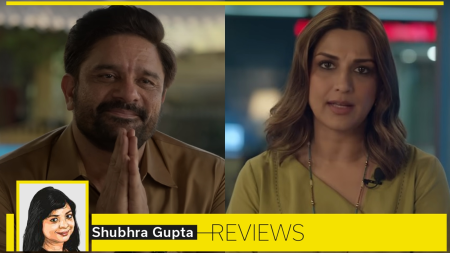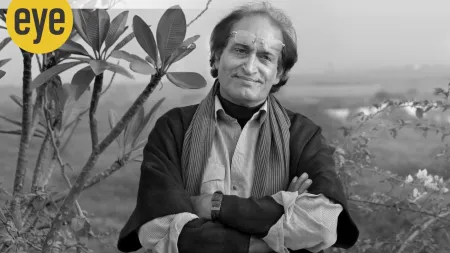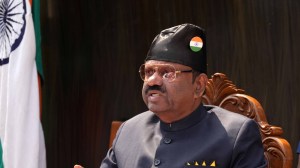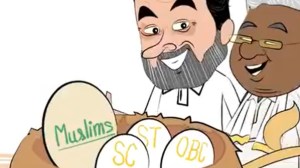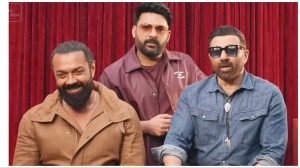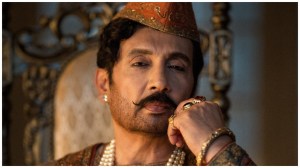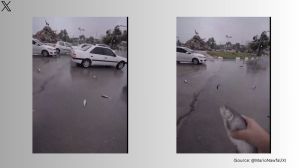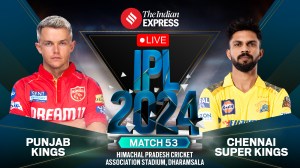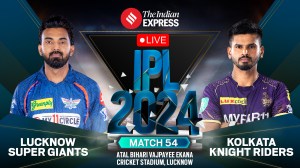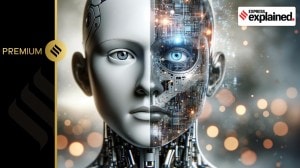- India
- International
UPSC Essentials | Mains answer practice — GS 3 : Questions on supersonic cruise missile and India’s charging infrastructure (Week 48)
Are you preparing for UPSC CSE 2024? Here are questions from GS paper 3 for this week with essential points as the fodder for your answers. Do not miss points to ponder and answer in the comment box below. Try them out!
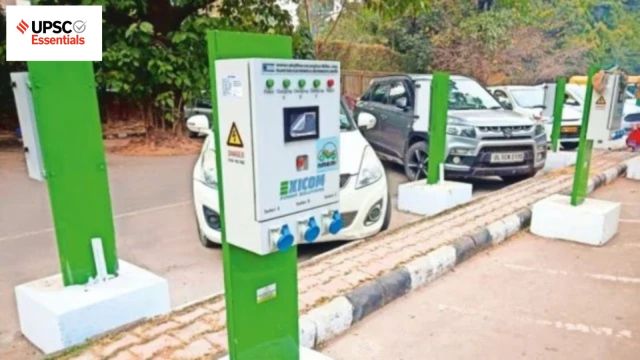 Attempt question on India’s charging infrastructure in today's answer writing practice. (File)
Attempt question on India’s charging infrastructure in today's answer writing practice. (File)UPSC Essentials brings to you its initiative for the practice of Mains answer writing. It covers essential topics of static and dynamic parts of the UPSC Civil Services syllabus covered under various GS papers. This answer-writing practice is designed to help you as a value addition to your UPSC CSE Mains. Attempt today’s answer writing on questions related to topics of GS-3 to check your progress.
🚨 The Indian Express UPSC Essentials brings to you the April edition of its monthly magazine. Click Here to read. Share your views and suggestions in the comment box or at manas.srivastava@indianexpress.com🚨
QUESTION 1
What are supersonic cruise missiles? Discuss the strategic significance of these missiles.
QUESTION 2
India’s charging infrastructure requires a major boost to alleviate range anxiety and drive widespread adoption. Discuss.
General points on the structure of the answers
Introduction
— The introduction of the answer is essential and should be restricted to 3-5 lines. Remember, a one-liner is not a standard introduction.
— It may consist of basic information by giving some definitions from the trusted source and authentic facts.
Body

— It is the central part of the answer and one should understand the demand of the question to provide rich content.
— The answer must be preferably written as a mix of points and short paragraphs rather than using long paragraphs or just points.
— Using facts from authentic government sources makes your answer more comprehensive. Analysis is important based on the demand of the question, but do not over analyse.
— Underlining keywords gives you an edge over other candidates and enhances presentation of the answer.
— Using flowcharts/tree-diagram in the answers saves much time and boosts your score. However, it should be used logically and only where it is required.
Way forward/ conclusion
— The ending of the answer should be on a positive note and it should have a forward-looking approach. However, if you feel that an important problem must be highlighted, you may add it in your conclusion. Try not to repeat any point from body or introduction.
— You may use the findings of reports or surveys conducted at national and international levels, quotes etc. in your answers.
Self Evaluation
— It is the most important part of our Mains answer writing practice. UPSC Essentials will provide some guiding points or ideas as a thought process that will help you to evaluate your answers.
THOUGHT PROCESS
You may enrich your answers by some of the following points
QUESTION 1: What are supersonic cruise missiles? Discuss the strategic significance of these missiles.
Introduction:
— A cruise missile is an autonomous self-propelled guided vehicle that uses aerodynamic lift to maintain flight for the majority of its flight path and has the primary objective of delivering a payload to a target.
— They travel through the atmosphere and employ jet engine technology. Cruise missiles can be classified based on size, speed, range, and whether they are launched from land, air, surface ships, or submarines.
— Supersonic cruise missiles move at speeds of approximately 2-3 Mach. The missile’s modular architecture and flexibility to launch from various orientations allow it to be combined with a wide range of platforms, including warships, submarines, various types of aircraft, and mobile autonomous launchers.
— The combination of supersonic speed and warhead mass produces a high kinetic energy, resulting in a significant deadly effect. BhahMos is now the only known flexible supersonic cruise missile system in operation.
Body:
You may incorporate some of the following points in the body of your answer:
Strategic significance of supersonic cruise missiles
— BrahMos is a two-stage missile with a solid propellant booster engine.
— Its first stage accelerates the missile to supersonic speed (faster than sound) before separating. The liquid ramjet, or second stage, then accelerates the missile to three times the speed of sound during the cruise phase.
— The missile has an extremely low radar signature, making it stealthy, and it can follow a variety of paths.
— To hit the target, the ‘fire and forget’ missile can fly at a cruising height of 15 km and a terminal altitude of 10 m.
— Cruise missiles, such as the BrahMos, are referred to as “standoff range weapons” because they are launched at a distance that allows the attacker to avoid defensive counterfire. Most of the world’s major military have these in their arsenal.
— The BrahMos has three times the speed, 2.5 times flight range and higher range compared to subsonic cruise missiles.
— An extended range version of the BrahMos air-launched missile was tested from a frontline SU-30MKI aircraft in 2022. In the same year, an advanced sea-to-sea variant of BrahMos was tested from the INS Visakhapatnam.
Conclusion:
— Recently, India’s BrahMos supersonic cruise missiles were delivered to the Philippines as part of a $375 million deal signed by the two countries in 2022.
— Land-based BrahMos formations along the borders, BrahMos-equipped Sukhoi-30s at bases in Northern theatre and and Southern peninsula, and BrahMos-capable ships and submarines deployed in sea together form a triad.
— The BrahMos is undergoing a number of upgrades and work is on to develop versions with higher ranges, manoeuvrability and accuracy.
(Source: Indian BrahMos missiles delivered to the Philippines: The missile’s significance, http://www.brahmos.com)
Points to Ponder
Other classifications of cruise missiles
Difference between solid propulsion and liquid propulsion
Related Previous Year Questions
Discuss India’s achievements in the field of Space Science and Technology. How the application of this technology has helped India in its socio-economic development? (2016)
India has achieved remarkable successes in unmanned space missions including the Chandrayaan and Mars Orbiter Mission, but has not ventured into manned space mission. What are the main obstacles to launching a manned space mission, both in terms of technology and logistics? Examine critically. (2017)
QUESTION 2: India’s charging infrastructure requires a major boost to alleviate range anxiety and drive widespread adoption. Discuss
Introduction:
— India’s electric mobility strategy is primarily focused on battery electric vehicles (BEVs) replacing internal combustion engine (ICE) vehicles, with Li-ion batteries viewed as the most viable alternative for the time being.
— India’s EV charging infrastructure remains a barrier to widespread electric vehicle adoption.
— Despite several governments granting incentives for the installation of such infrastructure, the number of public charging stations established by PSUs climbed by just 39%, while EV sales increased by 168%, according to a recent Customised Energy Solutions research.
Body:
You may incorporate some of the following points in the body of your answer:
— As of February 2023, the country had just 12,146 public EV charging stations serving around 33 lakh registered EVs, with a vehicle-to-station ratio of 270:1, whereas China has a substantially higher ratio of 7 EVs per charging station.
— According to the Confederation of Indian Industry (CII) research, India will need to deploy more than 13 lakh chargers by 2030 to meet expected demand. Addressing this gap is critical as the country moves towards cleaner mobility alternatives.
— Efforts are being made to localise EV battery manufacture, as this is required to qualify for government-sponsored schemes and subsidies to boost EV manufacturing.
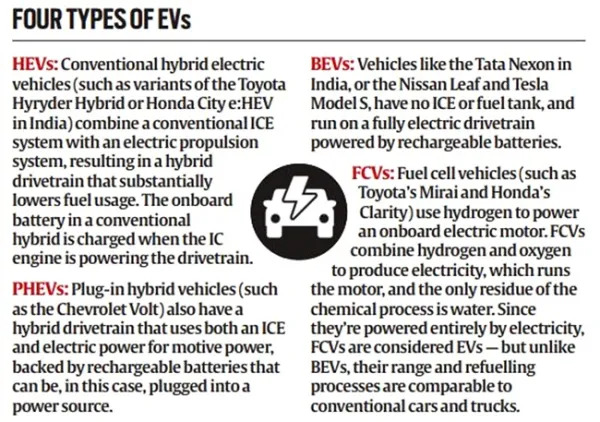 Four types of EVs
Four types of EVs
Issues in Battery Electric Vehicles push
— The BEV experience in markets ranging from Norway to the United States and China demonstrates that the electric push succeeds only when it is supported by state subsidies.
— According to a World Bank report, investing in charging infrastructure is 4-7 times more successful at increasing EV adoption than providing upfront purchase subsidies.
— Several countries that have promoted EVs derive a large portion of their electricity from renewable sources, such as Norway, which has 99% hydroelectric power. In India, the grid is still mostly powered by coal-fired thermal facilities.
— As India struggles to gain traction in the global lithium value chain, there is talk on the necessity to diversify the country’s reliance on Li-ion batteries in its EV mix.
(Source: The problem with battery electric vehicles by Anil Sasi, EV push: Automakers, energy majors join hands by Aggam Walia)
Points to Ponder
Hybrid vehicles
Ethanol and flex fuel vehicle
Hydrogen fuel cell electric vehicles
Related Previous Year Questions
What are the direct and indirect subsidies provided to farm sector in India? Discuss the issues raised by the World Trade Organization (WTO) in relation to agricultural subsidies. (2023)
Do you think India will meet 50 percent of its energy needs from renewable energy by 2030? Justify your answer. How will the shift of subsidies from fossil fuels to renewables help achieve the above objective? Explain. (2022)
Previous Mains Answer Practice
UPSC Essentials: Mains answer practice — GS 1 (Week 47)
UPSC Essentials: Mains answer practice — GS 1 (Week 46)
UPSC Essentials: Mains answer practice — GS 2 (Week 46)
UPSC Essentials: Mains answer practice — GS 2 (Week 47)
UPSC Essentials: Mains answer practice — GS 3 (Week 47)
UPSC Essentials: Mains answer practice — GS 3 (Week 46)
Subscribe to our UPSC newsletter and stay updated with the news cues from the past week.
May 05: Latest News
- 01
- 02
- 03
- 04
- 05


